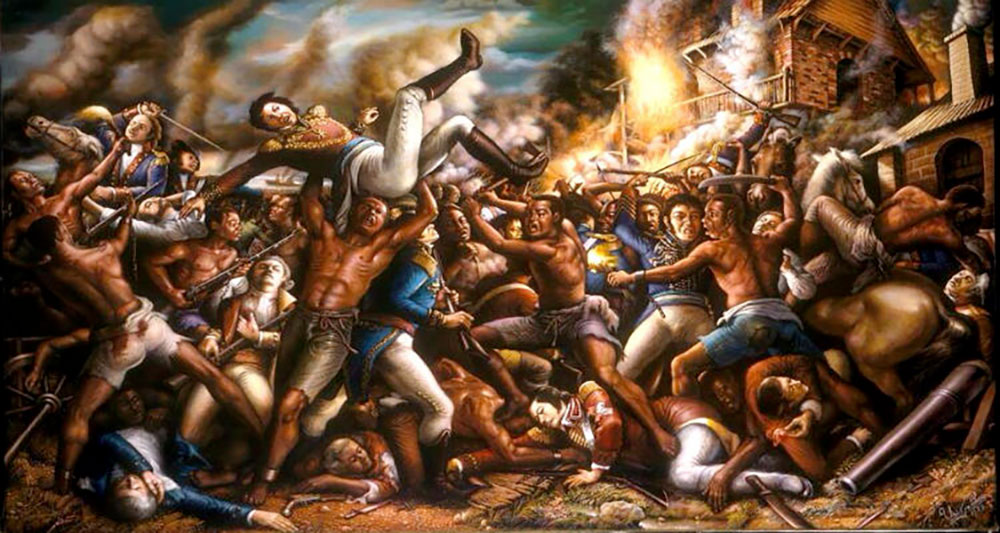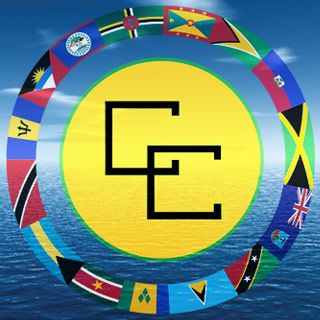Vol. 42 No. 22 · 19 November 2020 of The London Review of Books
—–
THE BOOKS IN REVIEW:
The Common Wind: Afro-American Currents in the Age of the Haitian Revolution
by Julius S. Scott.
Verso, 246 pp., £12.99, September,
978 1 78873 248 2
Maroon Nation: A History of Revolutionary Haiti
by Johnhenry Gonzalez.
Yale, 302 pp., £30, August 2019,
978 0 300 23008 6
Black Spartacus: The Epic Life of Toussaint Louverture
by Sudhir Hazareesingh.
Penguin, 442 pp., £25, September,
978 0 241 29381 2
——
The movement for Black liberation made its world-historical debut in August 1791 when ten thousand slaves in the north of Saint-Domingue rose up and laid waste to sugar plantations. Within three months, the numbers involved in the insurrection had grown eightfold. Sugar production almost ceased. Fortunes burned. Planters fled, and some were killed. By 1794, the rebels had compelled France to abolish slavery throughout its colonies. Here was one of the most astonishing achievements in history, but it was fleeting. Napoleon, who seized power in 1799, reneged on France’s promise of ‘liberté, égalité, fraternité’ for those with dark skin. His regime couldn’t tolerate a former slave ruling over its most valuable colony. But Toussaint Louverture’s army of self-freed soldiers – men and women uprooted from their homelands and families, survivors of the Middle Passage and of an especially brutal form of slavery – wouldn’t submit to bondage again. The French general Charles Leclerc promised to subdue Saint-Domingue within two weeks, but nine months later he was dead, along with tens of thousands of his soldiers. In 1804, Haiti became the second republic in the New World and the first Black one. The second article of its constitution abolished slavery; the fourteenth declared all Haitians, regardless of their skin colour, to be Black. Haiti was post-colonial before many colonies existed.
A handful of contemporaries grasped what was happening: ‘There’s not a breathing of the common wind/That will forget thee,’ Wordsworth wrote in homage to Louverture, who was by then dying in a French prison. Most contemporary writers, as the Haitian historian and anthropologist Michel-Rolph Trouillot argued, were too blinded by racism to see what was taking place. The idea that Black slaves could imagine or desire freedom, let alone engineer a protracted, eventually victorious struggle for it, was unthinkable. In 1804 the economies of most Atlantic powers depended on Black slavery. The US president was a slaver celebrated for a Declaration of Independence that didn’t need to specify that only white men were created equal. Humiliation may also have had something to do with this failure of comprehension. France, routed, was forced into a firesale of the Louisiana Territory, a lacklustre end to Napoleon’s western ambitions. (Britain, for its part, lost sixty thousand men in its attempt to gain control of the Caribbean.)
Archives reflect inequalities. While written records by the protagonists are scarce (Louverture, who was said to send out more than two hundred letters a day, was a rare exception), accounts from planters, European officials and opponents of Black liberation are plentiful, many of them steeped in a baroque and obsessive racism. Too many historians have taken such sources at their word. Not that many historians wrote about the revolution. The exception was C.L.R. James, whose Black Jacobins, published in 1938, was neglected for decades then reissued in 1963 as decolonisation movements gained momentum across the African continent.
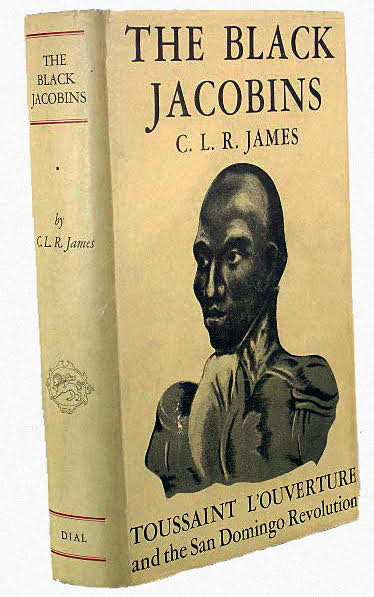
Writing about the Haitian Revolution has often reflected (and recreated) the inequalities that gave rise to it. For nearly two centuries, the revolution was an affront to economies grown fat on slavery, to empires still carving up the Third World under the auspices of civilising it, to polities ostensibly based on universal rights. But by the mid-1990s, a shift in scholarly attitudes towards Black liberation was beginning to take place. Trouillot’s work was key to that shift, particularly his emphasis on the ways in which the forces of slavery, colonialism and racism shaped the modern world. Now, a new generation of historians are inventing or applying fresh methods to fragmentary archives, critically interpreting the better-known primary sources and hypothesising about what has been left out. They scour the manifests of ships and the ledgers of overseers, travelogues, newspapers, Vatican dossiers and Vodou iconography, searching for traces of the people who made the revolution. Dozens of books and articles now appear every year about the Haitian Revolution, while historians take to Twitter and the popular press to remind us of Haiti’s singular place in the history of liberation movements.
On the eve of the 1791 insurrections, Saint-Domingue was France’s most profitable colony. But France was in the throes of its own revolution, and the turmoil created an opening for Britain and Spain to try to take control, using former slaves as mercenaries. Louverture initially fought for the Spanish but after France abolished slavery throughout its colonies in 1794, he transferred his allegiance, and his troops. By 1796, he was the colony’s lieutenant-governor; two years later, he had defeated the British and restored French control over most of the colony. But when, in 1801, he orchestrated his own appointment as governor-general and issued a constitution, Napoleon interpreted his actions as threatening independence and invaded. The ensuing war was fiery and bloody. In May 1802, Leclerc and Louverture reached an apparent détente and Louverture agreed to retire. But the following month, Leclerc lured him to a meeting, had him arrested and sent to France.
The Common Wind, which takes its title from Wordsworth’s sonnet to Louverture, is based on Julius Scott’s 1986 doctoral dissertation. It didn’t find a publisher until 2018, by which time Scott was an emeritus lecturer at Michigan and had given up on his work reaching a wide audience. Photocopies – and, later, PDFs – of his thesis had circulated among historians like an ‘underground mixtape’. As the dissertation did the rounds, through at least two generations of professors and students, it helped define the emerging field of Atlantic world history.
Scott insisted on understanding ‘enslaved people as thinking people’. Then he tried to find out what they were thinking about. Others took it for granted that the insurrection in Saint-Domingue was merely an imitation, and a shabby one at that, of the French Revolution that began two years earlier. Some historians still insist that the rebels were never more than royalist pawns, proxies in a struggle among empires, or victims of revolutionary contagion. In this version of events, the desire for freedom is imitative, not enlightened.
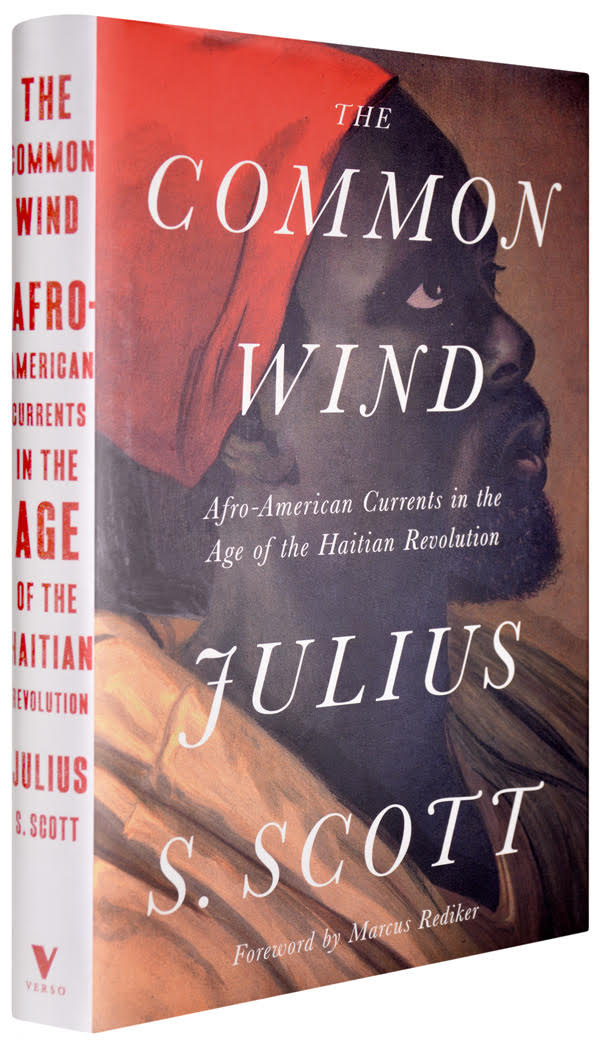
Scott unearthed a good deal of evidence to the contrary. Slaves rarely had the chance to speak for themselves, but the record nonetheless contains numerous traces of them, often via encounters with the ‘masterless’ people of the Caribbean, who lived beyond the reach of social control. Scott discovered many more such people than had previously been accounted for:
Slaves deserted plantations in large numbers; urban workers ducked their owners; seamen jumped ship to avoid floggings and the press gang; militiamen and regular troops grumbled, ignored orders and deserted their watch; ‘higglers’ left workplaces to peddle their wares in the black market; and smugglers and shady foreigners moved about on mysterious missions from island to island.
These rebellious figures inevitably showed up in the records: newspaper stories, colonial edicts and assembly proceedings, complaints by governors-general, notices of desertion and runaway slaves, oral testimony from sailors on seized ships. They were rarely central characters, but Scott would trace a passing reference in a dusty archive in Spanish Town, Port-au-Prince or London, and, weaving it together with other loose threads, reconstruct the fabric to which it had once belonged. In one instance, a few articles published in the Kingston Royal Gazette during the spring of 1792 yielded a wholly credible saga about two musicians, a clarinettist and a drummer, one Irish and one from Quebec, who absconded from their regiment and ended up, perhaps, ‘fishing and shooting’ on the southern coast of Jamaica, looking ‘as brown as some people of colour’.
In the Old World, free movement of labour was at most an annoyance to the ruling class. On the sugar plantations of the Caribbean, it posed an existential threat. In Saint-Domingue on the eve of the revolution, 90 per cent of the population were slaves, and as Laurent Dubois points out in Avengers of the New World (2005), they had every reason to rise up. Life expectancy was 37, and 5 or 6 per cent of the slave population died every year. Owners and overseers reassured themselves that the slaves didn’t have it in them to revolt, but still lived in constant terror of insurrection. As the revolution in France ran its course and news trickled into the colony, white fears grew.
Containment was the planters’ best hope, but it proved impossible to stockade the fields against masterless people of all types, including runaway slaves, and the news they brought. Among slaves, marronage was common and sometimes tacitly condoned. Itinerant traders carried goods and gossip between plantations and cities. Deported criminals from Europe vexed the colonial authorities, soldiers absconded and waves of white immigrants arrived to seek their fortunes – or simply to escape ‘the reprisals of relatives and the law’. Then there were the sailors. Saint-Domingue was full of them: the colony, which dominated the sugar trade, was a site of constant peripheral commerce and territorial skirmishes. In Cap Français, now Cap Haitien, sailors were said to outnumber both white residents and free residents of colour. Many had been pressed into service on their vessels and subjected to the lash; they may have been traumatised witnesses to the slave trade. Scott raises the intriguing possibility of solidarity between slaves and seamen: Black people, free and not, tried to learn a smattering of nautical terminology to pass themselves off as sailors, while some sailors tried to pass as slaves in order to sell their wares on the wharves. In one instance, smugglers accused of stealing slaves turned out to be liberating them. It isn’t a coincidence that British sea shanties ‘bear striking resemblances to Caribbean slave songs’. Indeed, the ‘very practice of shantying may have its roots in the interaction of sailors and black dockworkers.’
Throughout the Caribbean, masterless people spread news of the French Revolution, of British debates on the slave trade, and of the insurrection in Saint-Domingue. After the first uprising, in August 1791, authorities in Jamaica contrived a ‘conspiracy of silence’ that extended to official proclamations, newspapers and even personal correspondence. Nonetheless, by September traditional slave songs were incorporating stanzas about the rebellion. Well into the 1800s, the ‘magick word Liberty’ spread from port to port, despite news blackouts, the destruction of printing presses and the demand of French commanders that their soldiers remove ‘Liberty or Death’ from their banners.
Johnhenry Gonzalez acknowledges a paradox in the title of his book, Maroon Nation. A maroon is a runaway slave, and slavery was abolished in the western half of Hispaniola even before the Haitian state existed. A nation without slavery can’t, strictly speaking, be a nation of maroons. But Gonzalez is using the term ‘maroon’ figuratively, as contemporary Haitians do: to practise mawonaj is to be evasive or difficult to pin down, especially by persons in authority. It is to behave contrary to expectations or even to fail to keep one’s promises, without suffering any loss of personal honour as a consequence. Mawonaj is a weapon of the weak – flight, escape, motion, illegibility, a refusal to be known – and in Haiti it can be an effective strategy for everyone from a president negotiating an international loan to a lover trying to evade commitment.
But for Gonzalez ‘maroon’ is not only a metaphor, because in his view independence in 1804 did not lead to genuine emancipation. (Neither, for that matter, did the temporary French abolition of slavery ten years earlier.) Although constitution after constitution ‘began by affirming that there were not and could never be any slaves in Haiti’, successive regimes forced the supposedly liberated cultivateurs back onto the plantations. The imperative was to produce sugar (and to a lesser extent other cash crops, such as coffee, cotton and indigo) for export, and use the profits to pay for the weapons and fortifications that Haiti’s leaders believed they needed to defend their fledgling state.
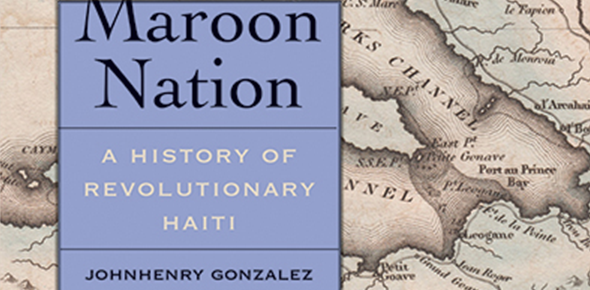
Their terror of re-invasion was warranted. The revolution had lasted more than a dozen years – a vicious and costly war during which alliances among the French, British, Spanish and the rebels in Saint-Domingue, as well as various factions, shifted abruptly and murderously. It was not improbable that one Atlantic power or another, including the slavery-sanctioning United States, might try to claim the country. Early leaders believed commodity production was the key to its remaining independent. Even in the last decade of the 18th century, when Saint-Domingue was still stuck in its abusive relationship with France, Louverture was determined to rebuild the plantation economy. He enticed Europeans to return to Saint-Domingue, both to restore sugar production and to mollify the French, and ordered emancipated men and women back to the plantations, sometimes the same ones where they had been enslaved. But having lost their ‘spirit of submission’ over the long years of revolutionary struggle, they weren’t keen to do so. As cultivateurs – sharecroppers, essentially – they would be entitled to a quarter of the revenue from the sale of the crop (the state got another quarter, and owners got half), but wage theft was common. When commodity prices rose, managers found little reason to tell the cultivateurs. Wages, anyhow, could hardly compensate for the similarities to the old regime. Supposedly liberated citizens worked six days a week, and weren’t allowed to leave the plantations without permission; those who did could be arrested as vagabonds. There was corporal punishment and mass defections to the hills, followed by ‘round-ups’: the cultivateurs were still regarded as state property. Even after independence, conditions were so draconian that there may have been more marronage than before the 1791 insurrection.
Sensitive to the symbolic power of the whip and chain, Haiti’s early leaders avoided their use. Louverture, Jean-Jacques Dessalines and Henri Christophe had all been slaves themselves. But the overseers used violence to make cultivateurs work harder: clubs (for beating), vines (for lashing) and ropes (for shackling). Anyone who dared suggest that a vine was a whip au naturel, or compared the new agricultural system to slavery, could be arrested or fined on Louverture’s orders.
As well as wooing white planters to return to their plantations, Louverture also used land to consolidate power within Saint-Domingue, awarding abandoned estates to rebel officers. After his death, Dessalines and Christophe followed a similar course, but aimed to replace the white plantocracy with a native one. For most Haitians, it didn’t matter whether the plantation owner was Black, mixed-race or white; or whether he claimed France, Britain or Haiti as his nation, nor did it much matter whether the system was called slavery or sharecropping or militarised agriculture. The point was to stop participating in it.
Eventually they succeeded. By 1820, the men who had tried to revive plantation agriculture had met violent ends. Louverture, whose own nephew, Moïse, organised a servile revolt against him in 1801, died in French custody. Dessalines was assassinated by political opponents. Christophe, having suffered a stroke and facing insurrection, shot himself in his Palais Sans Souci. The only one of Haiti’s founding fathers who died a natural death was Alexandre Pétion, also known as Papa Bon-Coeur, who saw quickly that his regime, in the south (Pétion and Christophe ruled over different parts of Haiti for a time), couldn’t survive without land reform. He divided up small parcels of land and distributed them among the former slaves. It was on these plots, unsuitable for intensive monoculture but adequate for supporting a family (with a small surplus to barter) that, according to Gonzalez, Haitians finally secured their freedom.
Descriptions of the early ‘counter-plantation system’ aren’t new; the Haitian sociologist Jean Casimir coined the term around thirty years ago. Gonzalez, though, puts the movement at the very centre of Haiti’s revolution. In his view, its main achievement wasn’t formal emancipation – though Haiti was the first nation to abolish slavery – or casting off the colonial yoke, or even the formation of the first Black republic. Rather, its victory was in the cultivateurs’ permanent rejection of plantation agriculture, which had put Haiti at the bottom of the emerging capitalist order. According to Gonzalez, the tiny plots of land were so fertile that, once Haiti shifted from sugar production to growing food for its citizens, small-scale farmers generated higher than expected surpluses, which were exported or used for strategic reserves. ‘In a Haitian hillside conuco,’ Gonzalez writes, borrowing a Taino term for a small-scale farm, ‘manioc, sugarcane, coconut, taro, sweet potato, yams, plantain and mango might all vie for sunlight against the wild shrubs and grasses that provide forage for goats or the jungle tree that the farmer might cut down to make charcoal.’
The other advantage of such plots was that they weren’t obvious to tax collectors, soldiers and others who might confiscate or tax some portion of the yield. The isolation of the hillside farms was already a disincentive. Those who could make the arduous trek to remote farms might not even know when they had arrived. Gonzalez calls this ‘cryptoculture’: ‘remote and shifting systems of farming designed to conceal crops and entire settlements’. At times, cultivateurs took their agricultural production underground by focusing on roots and tubers. The point was to conceal evidence of productivity from state authorities, who were ‘generally useless at best, repressive at worst and perpetually tax hungry’.
Unlike many chroniclers of Haiti’s revolutionary struggle, Gonzalez is not much interested in grand narratives of triumph and glory. The ex-slaves finally found freedom, but it was a parsimonious version, organised entirely around avoiding the attentions of the Black republic they’d helped to create. He mentions vehicles of mutual aid, such as savings societies and secretive religious organisations, but there was undoubtedly also much exploitation and abuse, especially of women and children. The possibilities of freedom seem to have been slim and rather grim. The ‘common wind’ didn’t blow through the hillside concucos.
Nonetheless, his book inspires a series of provocative questions. How might the Haitian state, scorned by many (to this day it has been unable to execute a reliable cadastral survey or issue national ID cards), repair its relationship with its citizens? Are there any fair terms under which Haiti could today take part in the global capitalist system? And, perhaps fancifully: what might have happened if early Haiti had known a ruler who openly advocated the dismantling and parcelling out of the plantations and the creation of a state of small, independent landowners?
Toussaint Louverture sat for at least one portrait during his lifetime but none has survived. Since his death, Louverture (né Bréda, for the plantation where he was born a slave) has been depicted again and again: on currency and propaganda posters, in paintings and lithographs, stories, folktales, plays, biographies, poetry. He has become an icon of Black liberation. Vodou quickly incorporated him into representations of Ogoun Fer, the warrior spirit, even though he suppressed the religion. And despite his obsession with restoring the plantocracy in Saint-Domingue, James wrote a play celebrating him as an anti-colonial hero (Paul Robeson took the lead role: he had admired Louverture since he was a teenager). In 1998, Toussaint’s remains were interred at the Panthéon: he was commemorated as a ‘freedom fighter, architect of the abolition of slavery and Haitian hero’, although he died, most likely tortured and murdered, at the hands of the French state.
Sudhir Hazareesingh’s new biography of Louverture, Black Spartacus, points to the difficulty of describing a figure for whom obscurity was political strategy.
He was a very private man who confided in no one and went out of his way to conceal important information about himself, his movements and his ultimate goals. He spread misinformation and rumours, often put false locations on his letters, and his most confidential messages were dictated in separate parts to different secretaries … he was renowned for his almost magical capacity to appear in the most unexpected of settings and vanish without a trace.
There is no doubt that Louverture had a genius for military and political strategy. He led his enemies and rivals, especially in Europe, to believe that he was weak and even stupid, then used their arrogance against them. In the last five years of the 18th century he managed to rid the colony of a succession of French agents. The first was Léger-Félicité Sonthonax, who is commonly and inaccurately credited with ending slavery in the French colonies. Louverture dispatched him to the Directory in Paris, sending after him a humiliating forty-page letter, which included a fictional dialogue that lampooned Sonthonax’s white-saviour tendencies. Louverture tricked the next agent, Gabriel de Hédouville, convincing him to publish a strict labour decree under his own name and then fomenting an uprising against him. (He ‘later reported that Toussaint’s mobilised cultivateurs had cast a spell on him in a ritual which involved “dancing around a bull’s head”’.) Another agent was locked up for two weeks in a chicken coop and violently threatened until he capitulated to Louverture’s plan to invade eastern Hispaniola, the present-day Dominican Republic.
Hazareesingh gives a sense of Louverture’s inexhaustibility and charisma, and makes a strong case that from the outset the fight against slavery was his guiding principle: he wasn’t fighting for independence or to make Haiti a Black republic; on the contrary, he envisaged a multiracial polity, claiming that nature ‘takes pleasure in diversifying the colours of the human species’. It’s difficult to square this with the fact that he consistently exhorted and then forced Haitians back onto the plantations to work in conditions similar to those they had endured during slavery. His moral appeals to his fellow citizens stressed the virtue of work; he chastised them for their alleged laziness, just as the Haitian elite does today. He told cultivateurs that the constitution obliged them to avoid ‘idleness, the mother of all vices’. He urged the newly liberated slaves of neighbouring Santo Domingo to work ‘harder than before’: ‘I have never believed that freedom and licence are the same, or that men who have become free can abandon themselves to laziness or disorder.’ After quashing a rebellion led by Moïse, Louverture told the defeated rebels: ‘In a free country, liberty consists not in following one’s whims but in doing that for which one is destined.’ If he ever explained why some people are destined for hard labour, while others are destined to profit from it, the evidence has been lost. Increasingly, he was forced to rely on physical coercion. He imposed what was in effect a martial order on agricultural production, demanding ‘submision and obedience’ from labourers. Towards the end of his rule he became trapped in an ‘authoritarian spiral’, surrounding himself with puppets and organising grandes fêtes in his own honour, at which speakers compared him to Bacchus, Hercules and Alexander the Great.
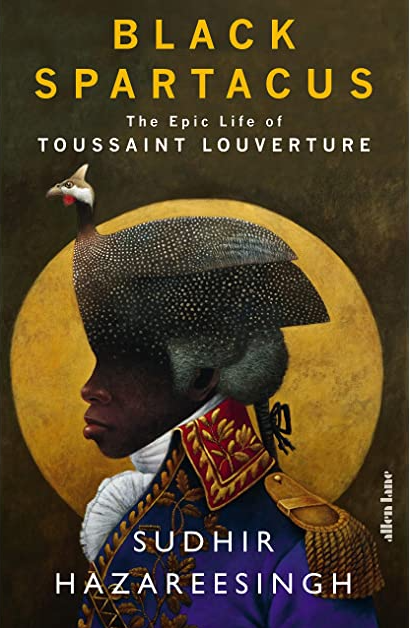
‘His agrarian policy was not an end in itself,’ Hazareesingh argues, and it is possible that during his years in power Louverture was playing for time. Saint-Domingue remained a French colony and support from French planters helped to protect his regime from Napoleon’s predations. The colony lacked the infrastructure – roads, markets, administration – to support small-scale agriculture. Perhaps Louverture envisioned building it; perhaps he believed that over time threats to the colony’s existence would fade, and so would its need for armaments and the sugar exports to buy them.
By the late 1700s, he had begun to look seaward. Cuba and Jamaica are only hours away by boat, and Louverture believed that mastering the seas could provide greater access to markets and, according to Scott, ‘consolidate the revolution’. The British and Americans, however, were quick to grasp the implications of a Black maritime power in the Caribbean, and though they’d fought their own war two decades earlier, joined forces to prevent it.
Louverture’s first and only sea voyage came after his arrest. As he boarded the French ship Héros he told his captors: ‘By striking me, you have cut the tree of Black liberty in Saint-Domingue. But it will spring back up from its roots, for they are many and deep.’ Louverture was taken from Brest, where the ship docked, to a castle in the Jura mountains. His captors accused him of stealing treasure and funds, harassed him with night searches, and deprived him of firewood, though his cell was freezing. They stripped him of his military title and uniform, as well as his clock, and held him in solidary confinement. The aim was to ‘humiliate, disorient and torture’ him, according to the historian Marlene Daut. He developed a bad cough but was not allowed to see a doctor. ‘The composition of negroes,’ one of his guards wrote, ‘being nothing at all resembling that of Europeans, I am ill-inclined to provide him with a doctor or a surgeon, which would be useless in his case.’ In January 1803 the minister of the marine was informed that the prisoner’s health was deteriorating rapidly: fever, vomiting, loss of appetite, pain, inflammation of the entire body. Three months later, he was dead.


